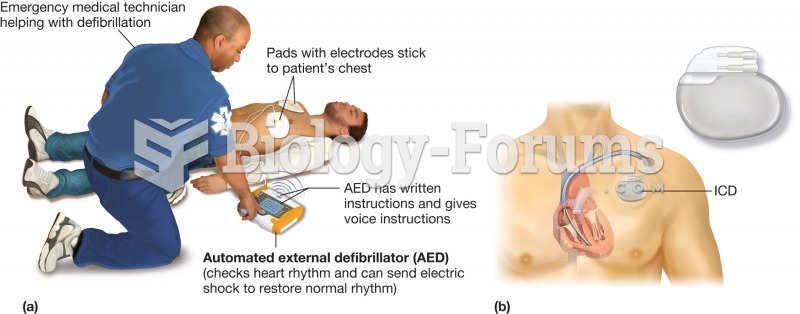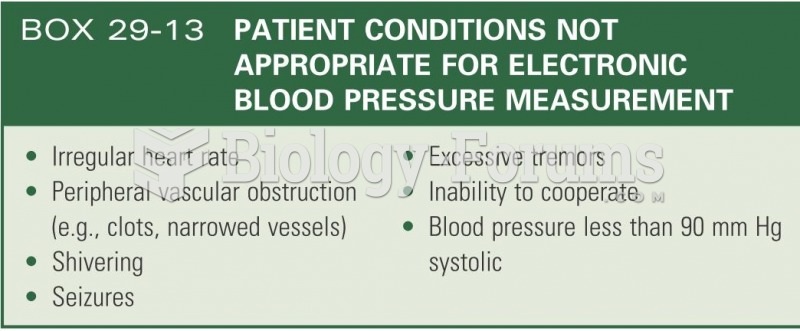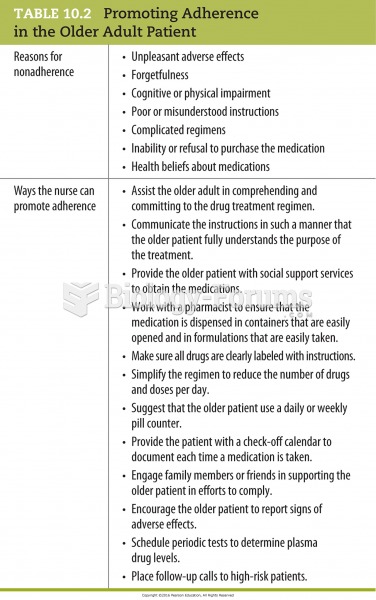|
|
|
Women are 50% to 75% more likely than men to experience an adverse drug reaction.
Blood is approximately twice as thick as water because of the cells and other components found in it.
The people with the highest levels of LDL are Mexican American males and non-Hispanic black females.
The newest statin drug, rosuvastatin, has been called a superstatin because it appears to reduce LDL cholesterol to a greater degree than the other approved statin drugs.
When Gabriel Fahrenheit invented the first mercury thermometer, he called "zero degrees" the lowest temperature he was able to attain with a mixture of ice and salt. For the upper point of his scale, he used 96°, which he measured as normal human body temperature (we know it to be 98.6° today because of more accurate thermometers).







